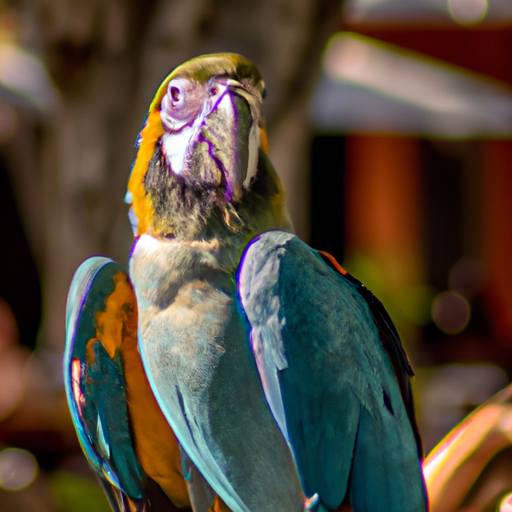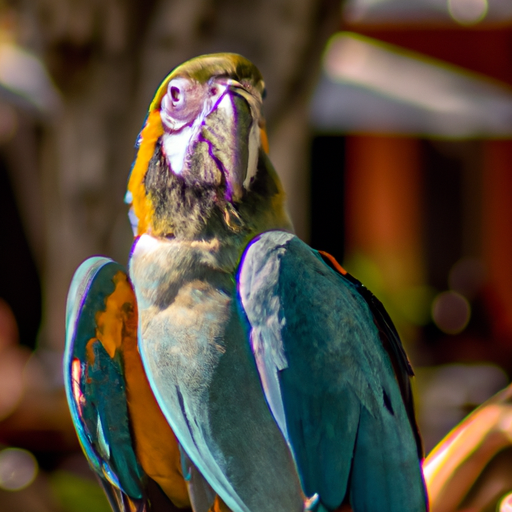
When it comes to our feathery friends, understanding their body language is essential to creating a strong bond with them. Unlike dogs and cats, parrots communicate primarily through their physical actions. This post, titled “Reading Parrot Body Language: What Every Move Means,” will guide you through the world of parrot body language, enabling you to interpret their actions and understand their needs better.
Parrots have a vast range of emotions, just like humans. They can be curious, playful, annoyed, or even frightened. By being able to decode their body language, you’ll be able to cater to their emotional needs and enhance their overall well-being. So, without further ado, let’s delve into the mysterious language of parrots.
Relaxed and Happy
A relaxed and happy parrot will often have its feathers slightly fluffed up. They may also grind their beak, which is equivalent to a cat purring. A parrot that is content might also preen you, meaning they are comfortable enough to treat you like a part of their flock. If they are really comfortable, you might even see them laying on their back—an ultimate sign of trust and contentment.
Excited or Interested
If a parrot’s eyes are pinning (pupils dilating and contracting), this means they are excited or interested in something. They might also lean forward or raise their crest (if they have one) to show interest. However, be cautious because pinning can also indicate a heightened state of emotion, which could be negative if combined with other signs of distress or agitation.
Scared or Nervous
A scared or nervous parrot will often try to make itself look bigger. They will puff up their feathers and might even spread their wings. They could also scream or bite to show they are uncomfortable. If you see these signs, it’s best to back off and give your parrot some space. It’s essential to respect their boundaries to build trust.
Aggressive or Defensive
Aggression in parrots can be displayed in several ways. They may fan their tail, rapidly open and close their beak, or lunge at you. If you notice these signs, it’s best to remove any stressors and give your parrot time to calm down. Never try to handle an aggressive parrot; this will only escalate the situation.
Fatigue or Illness
Parrots who are feeling unwell or tired may sit with their feathers fluffed up and their eyes closed. They might also lose their appetite or become less active. If you notice these signs and they persist, it’s vital to seek veterinary advice as soon as possible.
Reading parrot body language is a skill that requires patience and keen observation. Over time, as you become more familiar with your parrot’s unique behaviors and mannerisms, you’ll find it easier to understand what they’re trying to communicate. Remember, a happy parrot is a healthy parrot, and your understanding of their body language will go a long way in ensuring their happiness and well-being.
So, the next time you notice your parrot displaying any of these body languages, you’ll now know what they mean. This will not only strengthen your bond with your feathered companion but also help you to create a more harmonious and stress-free environment for them. After all, our ultimate goal as pet parents is to ensure the happiness and well-being of our beloved companions. And understanding their body language is the first step towards achieving this goal.


4 Comments
Thanks for this informative post! I’ve been a parrot owner for years, but I still learned a lot from your blog. Understanding their body language can really deepen the bond between us and our pets.
I really appreciate this blog post. Now whenever I see my parrot fluffing its feathers or bobbing its head, I’ll have a better idea of what it’s trying to communicate. More articles like this, please!
This article is a game-changer! I’ve always been intrigued by my parrot’s movements but never had a clear understanding of what they meant. Thank you for providing such useful insights!
Wow, this was a fascinating read! I had no idea that even the simplest of movements from my parrot could mean so much. I’ll be observing my little feathered friend with new eyes now.